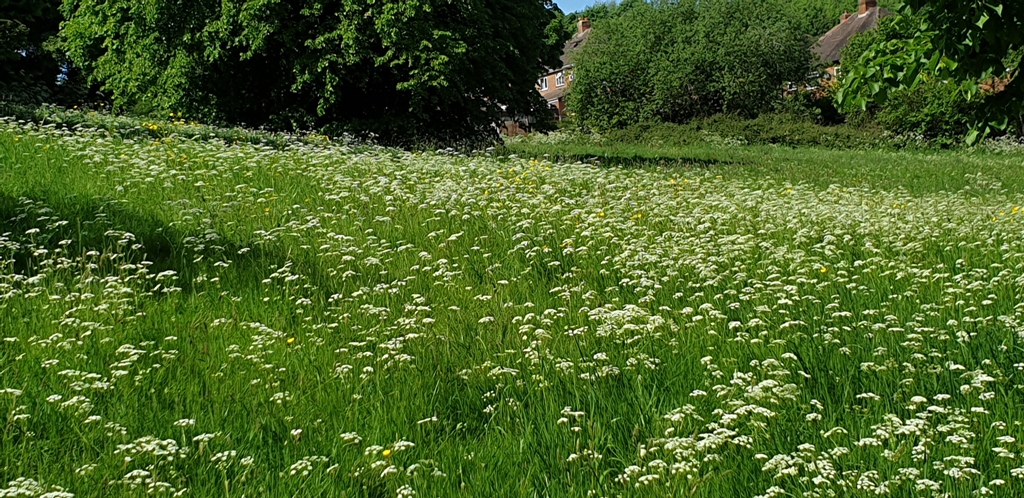
I’ve always liked the Apiaceae or Umbelliferae as they were formerly known as! And everybody knows the carrot so it is also known as the Carrot family.
It is easily recognisable, especially the second subfamily, which are the true ‘Umbels’.
In another post the Ground-elder was fully described for all its useful attributes and this week I hope to tackle all the others in the last family of all the Dicot families in Stace. In another post the Medicinal properties of the Apiaceae are highlighted.
It is a large family with 50 genera and many genera have just the one native species or a few species.
Several of our root vegetables and herbs belong to this family, although these are cultivated forms and the wild species of which they originated are mostly not native (NN in list below) to the British Isles.
I’ve used Wikipedia, PFAF or other websites a lot again as they have such valuable information about the individual species and their uses.
Also links with the online atlas of the British and Irish Flora of the Biological Records Centre in order to find out the natural habitats of the plants.
Medicinal Uses mostly came from the Med Flora by J. Barker as well as from the Plants for a Future website.
Pictures with gratitude by Matt Summers, Mike Poulton and Wikipedia Commons.
FBBC is added behind the Common Name in the contents below if the plant occurs in the ‘Flora of Birmingham and the Black Country’
Contents:
Identifying the Apiaceae or Carrot Family
Subfamily 1: Saniculoideae
Sanicula europaea or Sanicle FBBC
Eryngium maritimum or Sea-holly
Subfamily 2: Apioidea
Chaerophyllum temulum or Rough Chervil FBBC
Anthriscus sylvestris or Cow Parsley, Wild Chervil or Wild Parsley FBBC
- A. caucalis or Bur Chervil FBBC
- A. cerefolium or Garden Chervil
- Scandix pecten-veneris or Shepard’s-needle FBBC
Myrrhis odorata or Sweet Cicely FBBC
- Coriandrum sativum or Coriander FBBC
Smyrnium olusatrum or Alexander FBBC
- Bunium bulbocastanum or Great Pignut
Conopodium majus or Pignut FBBC
Pimpinella saxifraga or Burnet-saxifrage FBBC
- Pimpinella major or Greater Burnet Saxifrage FBBC
Aegopodium podagraria or Ground Elder FBBC
Berula erecta or Lesser Water-parsnip FBBC
Crithmum maritimum or Rock Samphire
Seseli libanotis or Moon Carrot
Oenanthe spp. (7 native) Water-dropworts
- Oenanthe fistulosa or Tubular Water-dropwort FBBC
- O. pimpinelloides or Corky-fruited Water-dropwort FBBC
- O. lachenallii or Parsley Water-dropwort FBBC
- O. silaifolia or Narrow-leaved Water-dropwort
- O. fluviatilis or River Water-dropwort
O. crocata or Hemlock Water-dropwort FBBC
O. aquatica or Fine leaved Water-dropwort FBBC
Aethusa cynapium or Fool’s Parsley FBBC
Foeniculum vulgare var. sativum or Fennel (Arch). FBBC
- Anethum graveolens or Dill FBBC
- Silaum silaus or Pepper-saxifrage FBBC
Meum athamanticum or Spignel
- Physospermum cornubiense or Bladderseed
Conium maculatum or Hemlock FBBC
Bupleurum spp. or Hare’s-ears
- Bupleurum rotundifoliumor Hare’s ear
- B. falcatum or Sickle-leaved Hare’s-ear
- B. tenuissimum or Slender Hare’s-ear
- B. baldense or Small Hare’s ear
- B. subovatum or False Thorow-wax FBBC
- Trinia glauca or Honewort
- Cuminum cymimum
Apium graveolens or Wild Celery FBBC
- Helosciadium repens or Creeping Marshwort
- H. nodiflorum or Fool’s -water-cress FBBC
- H. inundatum or Lesser Marshwort FBBC
- Trachyspermum ammi or Ajowan
- Ridolfia segetum or False Fennel
Sison segetum or Corn Parsley
- Sison amomum or Stone Parsley FBBC
- Cicuta virosa or Cowbane
- Ammi majus or Bullwort FBBC
- Visnaga daucoides or Toothpick-plant FBBC
- Falcaria vulgaris or Longleaf
Carum carvi or Caraway FBBC
- Carum verticillatum or Whorled caraway
- Selinum carvifolia or Cambridge Milk-parsley
Ligusticum scoticum or Scots Lovage
- Levisticum officinale or Lovage FBBC
Angelica sylvestris or Wild Angelica FBBC
- Angelica archangelica or Garden Angelica or Archangelica FBBC
- Ferula communis or Giant Fennel
Peucedanum officinale or Hog’s Fennel
- Imperatoria ostruthium or Masterwort & Imperatoria
- Thysselinum palustre or Milk-parsley
Pastinaca sativa ssp. sylvestris or Wild Parsnip FBBC
Heracleum spondylium or Hogweed or Cow parsnip FBBC
Torilis spp. or Hedge-parsleys
- Torilis japonica or Upright Hedge Parsley FBBC
- T. nodosa or Knotted Hedge Parsley
